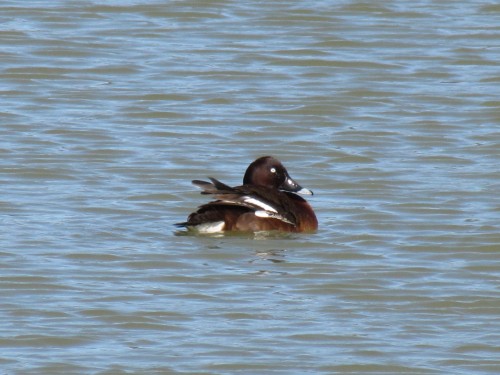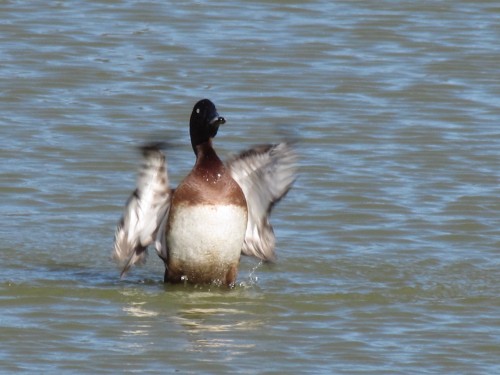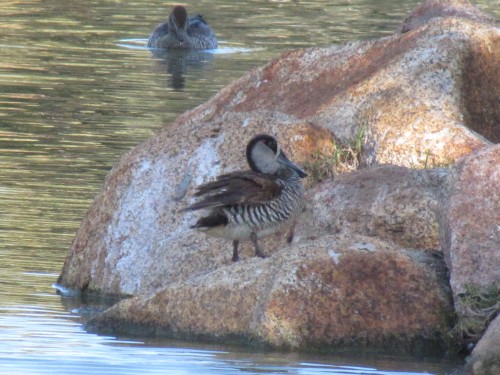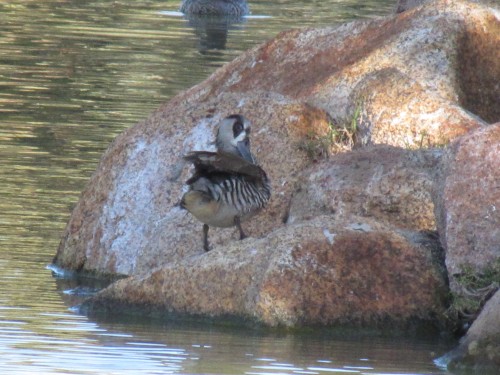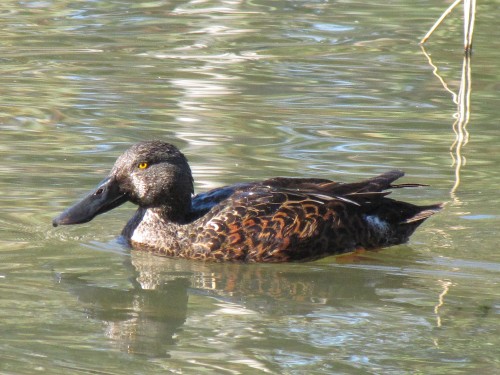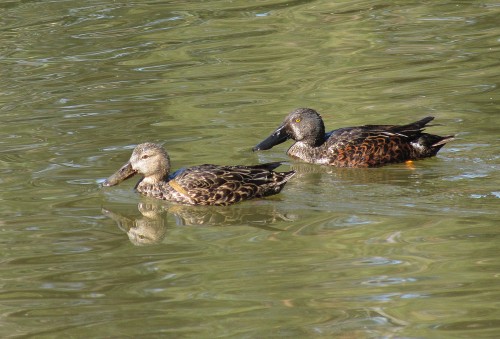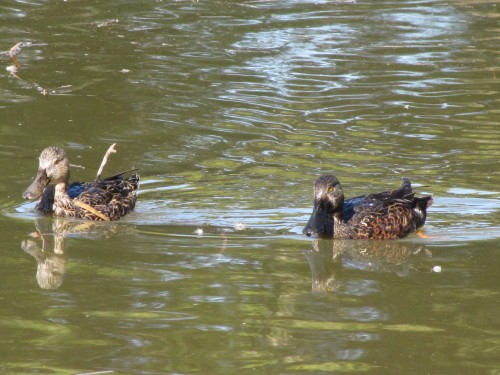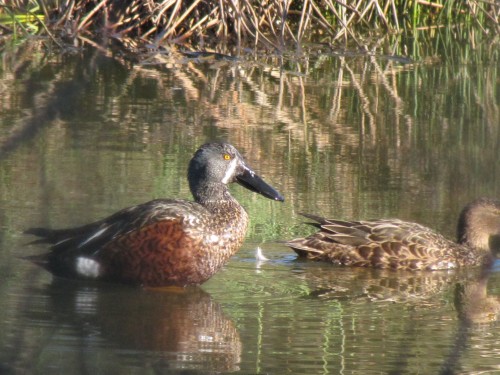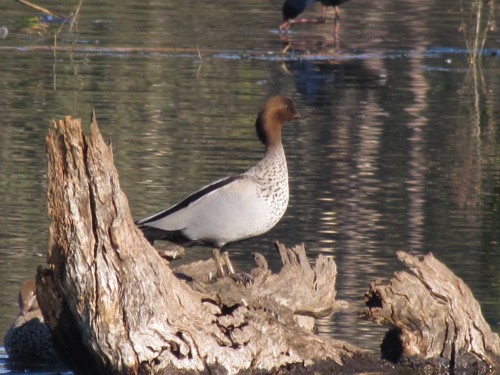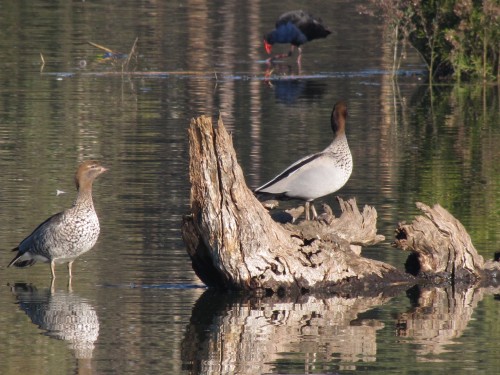Hardhead ducks at Dubbo
Over recent days I have written about and showed photos of the various birds seen on a visit to the Western Plains Zoo near Dubbo, NSW. All of these birds were actually naturally occurring species; none of them were a part of the actual species on display. The wild birds knew how to benefit from the facilities – like the artificial lake near the visitor centre shown above. They also are quick to feed on any unused food put out for the animals.
Today’s post features to Hardhead – also known as the White-eyed Duck. It is found throughout much of Australia in suitable habitat, such as lakes, swamps, large bodies of water, ornamental lakes and even brackish coastal swamps. It is rare in the drier parts of the interior. Although I have only see this species in small numbers, the field guides suggest that it is occasionally seen in large groups numbering in the thousands. It is often dispersive, moving to areas after good rain.
Further reading:
- White-eyed Duck or Hardhead – together with some comments on the possible origins of the name.
Pink-eared Duck in Dubbo
One of the lovely features of the Western Plains Zoo in Dubbo, New South Wales, is the large artificial lake next to the visitor centre. I think it is wonderful that visitors can come to this part of the zoo without paying the entrance fee. This is particularly valuable to casual passers-by who do not have the time to spend a whole day in the zoo. (Two days are recommended to see everything and entrance fees are valid for two days.)
It is also great for local people who just want to have a picnic on the grassed area next to this lake. From the picnic area visitors get a good view of two exhibits: one with monkeys and another with lemurs. I will post photos of the lemurs in a few days.
The artificial lake featured in today’s post had a good range of water birds present. I am assuming that all of these birds are actually wild birds, and not a part of the zoo’s collection; a bonus add-on, if you like.
Featured in today’s photos is a Pink-eared duck, also known as a Zebra Duck because of the striped effect of the feathers. This species is a fairly common one in most of eastern Australia and much of Western Australia. It is rare in Tasmania and mostly absent from the drier interior. It is a highly nomadic species.
Australasian Shoveler at Dubbo Zoo
On our visit last year to Dubbo Zoo in western New South Wales (Western Plains Zoo) we stopped to have lunch by a wetland next to the road which takes one through the zoo. On this swamp there were a few ducks, other waterbirds and many White Ibis, some nesting.
Two of the ducks in particular took my attention – a male and female Australasian Shoveler (also called Southern Shoveler). This is a species I have not seen very often and I only have a handful of photos worth showing here.
The Australasian Shoveler is found throughout the eastern parts of Australia, and is also present in south west Western Australia and in Tasmania. They are nomadic according to seasonal conditions and the presence of water. Their preferred habitats include lakes and other large bodies of water, either fresh or saline, swamps, wetlands, sewage ponds and flood waters.
While I concede that I haven’t observed this species on many occasions, in my experience they tend to be found singly, in pairs or small flocks, but never in great numbers. I stand to be corrected on this if I am wrong. This is also a rather timid species and is not easy to approach for photography. With the large number of daily visitors to the Dubbo Zoo is guess these birds have become used to people with cameras. I was able to get to within about 20 metres for these photos.
Further reading:
